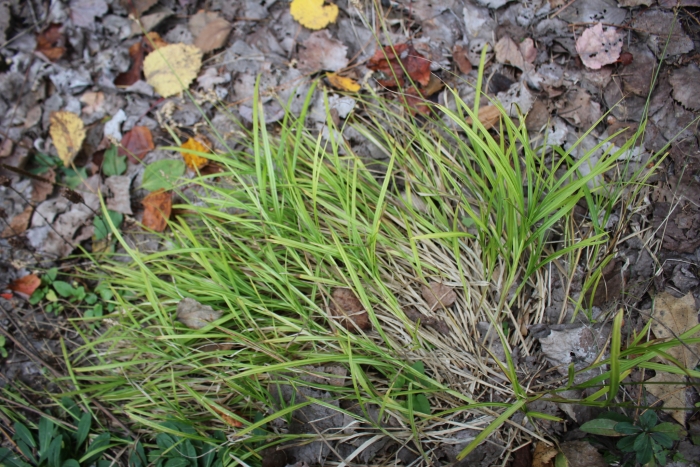Necklace Sedge
(Carex projecta)
Necklace Sedge (Carex projecta)
/
/

Quinten Wiegersma
CC BY 4.0
Image By:
Quinten Wiegersma
Recorded By:
Copyright:
CC BY 4.0
Copyright Notice:
Photo by: Quinten Wiegersma | License Type: CC BY 4.0 | License URL: http://creativecommons.org/licenses/by/4.0/ | Rights Holder: Quinten Wiegersma | Publisher: iNaturalist | Date Created: 2019-09-29T17:52:16-07:00 |























Estimated Native Range
Summary
Carex projecta, commonly known as Necklace Sedge, is a semi-deciduous perennial grass native to a variety of wetland habitats including marshes, wet meadows, fens, and along streambanks in the Eastern United States and Eastern Canada. It typically grows to a height of 2-3 feet (0.6-0.9 meters) and can spread to a width of 4-6 feet (1.2-1.8 meters), forming dense clumps. The plant features narrow, grass-like leaves and produces inconspicuous greenish-brown flowers in the late spring to early summer, which are followed by seed heads that resemble beads on a string, hence the common name.
Necklace Sedge is valued for its ability to thrive in wet conditions and is often used in rain gardens, bioswales, and as a naturalizing plant in moist areas of the landscape. Its dense growth habit makes it useful for erosion control along waterways. It is relatively low maintenance, requiring minimal care once established in the appropriate wetland setting. Gardeners should note that while it tolerates a range of light conditions, from part shade to full shade, it does require consistently moist to wet soil. There are no major disease or pest issues, but it can spread vigorously in ideal conditions, so it may need to be managed to prevent unwanted spread.CC BY-SA 4.0
Necklace Sedge is valued for its ability to thrive in wet conditions and is often used in rain gardens, bioswales, and as a naturalizing plant in moist areas of the landscape. Its dense growth habit makes it useful for erosion control along waterways. It is relatively low maintenance, requiring minimal care once established in the appropriate wetland setting. Gardeners should note that while it tolerates a range of light conditions, from part shade to full shade, it does require consistently moist to wet soil. There are no major disease or pest issues, but it can spread vigorously in ideal conditions, so it may need to be managed to prevent unwanted spread.CC BY-SA 4.0
Plant Description
- Plant Type: Grass
- Height: 2-3 feet
- Width: 4-6 feet
- Growth Rate: Slow
- Flower Color: N/A
- Flowering Season: Spring
- Leaf Retention: Semi-Deciduous
Growth Requirements
- Sun: Part Shade, Full Shade
- Water: Medium, High
- Drainage: Slow, Wet
Common Uses
Bird Garden, Deer Resistant, Low Maintenance
Natural Habitat
Wet meadows, fens, marshes, and along streambanks
Other Names
Common Names: Projecting Sedge, Carex À Bec Étalé
Scientific Names: , Carex projecta,
GBIF Accepted Name: Carex projecta Mack.